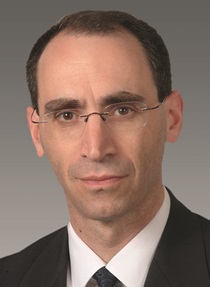
A patient’s pattern of atrial fibrillation (AF) at their initial diagnosis does not influence their rate of AF recurrence, nor their AF burden, following a catheter ablation procedure—as per a multicentre study presented recently at the 2024 Asia Pacific Heart Rhythm Society (APHRS) Scientific Sessions (26–29 September, Sydney, Australia) and simultaneously published in JACC: Clinical Electrophysiology.
The CAPLA trial sought to elucidate some of the differences between patients with persistent AF who have progressed from an initial paroxysmal phenotype, and patients in whom AF is persistent at diagnosis.
According to corresponding author Jonathan Kalman (The Royal Melbourne Hospital, Parkville, Australia) and his fellow study investigators, “relatively little is known” about the latter of these two subgroups, although prior observational studies have suggested these patients experience worse post-ablation outcomes.
Their study therefore set out to assess demographic and electrophysiologic characteristics of patients with persistent AF at first diagnosis compared to those who have progressed from paroxysmal AF—and also to assess the impact of AF pattern (paroxysmal versus persistent) at diagnosis on recurrence following an ablation procedure.
CAPLA was a multicentre trial—with standardised entry criteria and high-density monitoring—that randomised patients with persistent AF to either pulmonary vein isolation (PVI) ablation plus posterior wall isolation or PVI ablation alone. Its prespecified follow-up timepoint was 12 months, with outcomes being assessed after a three-month blanking period.
Kalman and colleagues report that a total of 334 patients were included (median age, 65.6 years; 23.1% female), with 194 (58.1%) of those having had persistent AF at first AF diagnosis and 140 (41.9%) having had paroxysmal AF.
On average, patients with persistent AF at diagnosis were younger (64 vs 67.7 years, p=0.005), had higher rates of heart failure (p<0.001), and lower left ventricular ejection fraction (LVEF; 54.5% vs 60%, p=0.007). In addition, AF recurrence occurred in 85 patients (43.8%) with persistent AF at diagnosis versus 70 (50%) with paroxysmal AF at diagnosis.
The investigators relay that, overall, persistent AF at diagnosis was not associated with a significant difference in the risk of recurrence on univariable analysis (hazard ratio [HR], 0.802; 95% confidence interval [CI] 0.585–1.101, p=0.173) nor multivariable analysis (HR, 0.922; 95% CI 0.647–1.312, p=0.650). The median AF burden was 0% in both groups (p=0.125), and there was also no between-group difference in left atrial size (p=0.337) nor bipolar voltage (p=0.579).
“In the CAPLA cohort of patients, the pattern of AF at first diagnosis did not influence post-ablation rates of AF recurrence or AF burden, which was very low in both groups,” Kalman et al conclude, writing in JACC: Clinical Electrophysiology. “This indicates that AF ablation may be equally useful for both of these persistent AF phenotypes.”
The authors also note that future studies with prospective follow-up from time of first AF diagnosis, and intensive post-ablation electrocardiography (ECG) monitoring for AF recurrences, are needed to better understand the clinical characteristics and ablation-related outcomes in patients with persistent AF at first diagnosis.









